For many years, San Antonio seemed to change at a slower pace than other big Texas cities. That's no longer the case.
Many prominent Alamo City landmarks have disappeared before our eyes, whether they be public spaces, favorite dining spots, beloved retail locations or popular amusements. But before we assume all those changes have been recent, we also lost plenty in the preceding decades.
Here's a roundup of 20 San Antonio landmarks — some beloved, others noteworthy for their audacity or oddness — that have either closed down, turned into something else or been completely razed as time moved on. While many of these may spark feelings of nostalgia, there may be a few you never knew existed.
20 beloved, wild and weird San Antonio landmarks that no longer exist
By San Antonio Current Staff on Fri, May 3, 2024 at 4:18 pm
Scroll down to view images
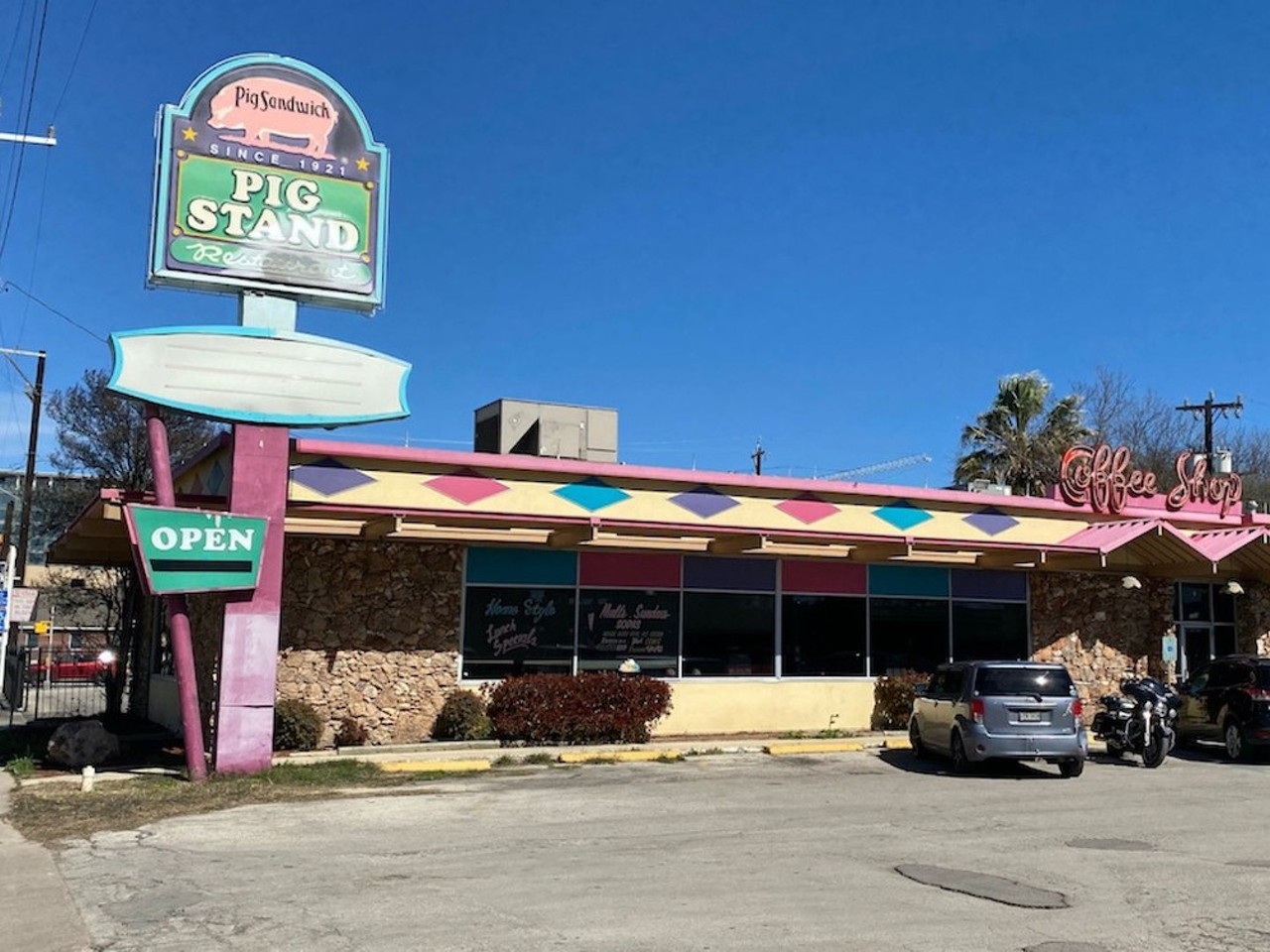
Sanford Nowlin
The Pig Stand
In operation for 101 years, the Pig Stand was one of the nation's iconic diners, and many commuters passed it daily on Broadway as they traveled to work downtown. The restaurant closed in 2023 after a development company bought it to make way for more projects along the gentrifying corridor.
In operation for 101 years, the Pig Stand was one of the nation's iconic diners, and many commuters passed it daily on Broadway as they traveled to work downtown. The restaurant closed in 2023 after a development company bought it to make way for more projects along the gentrifying corridor.
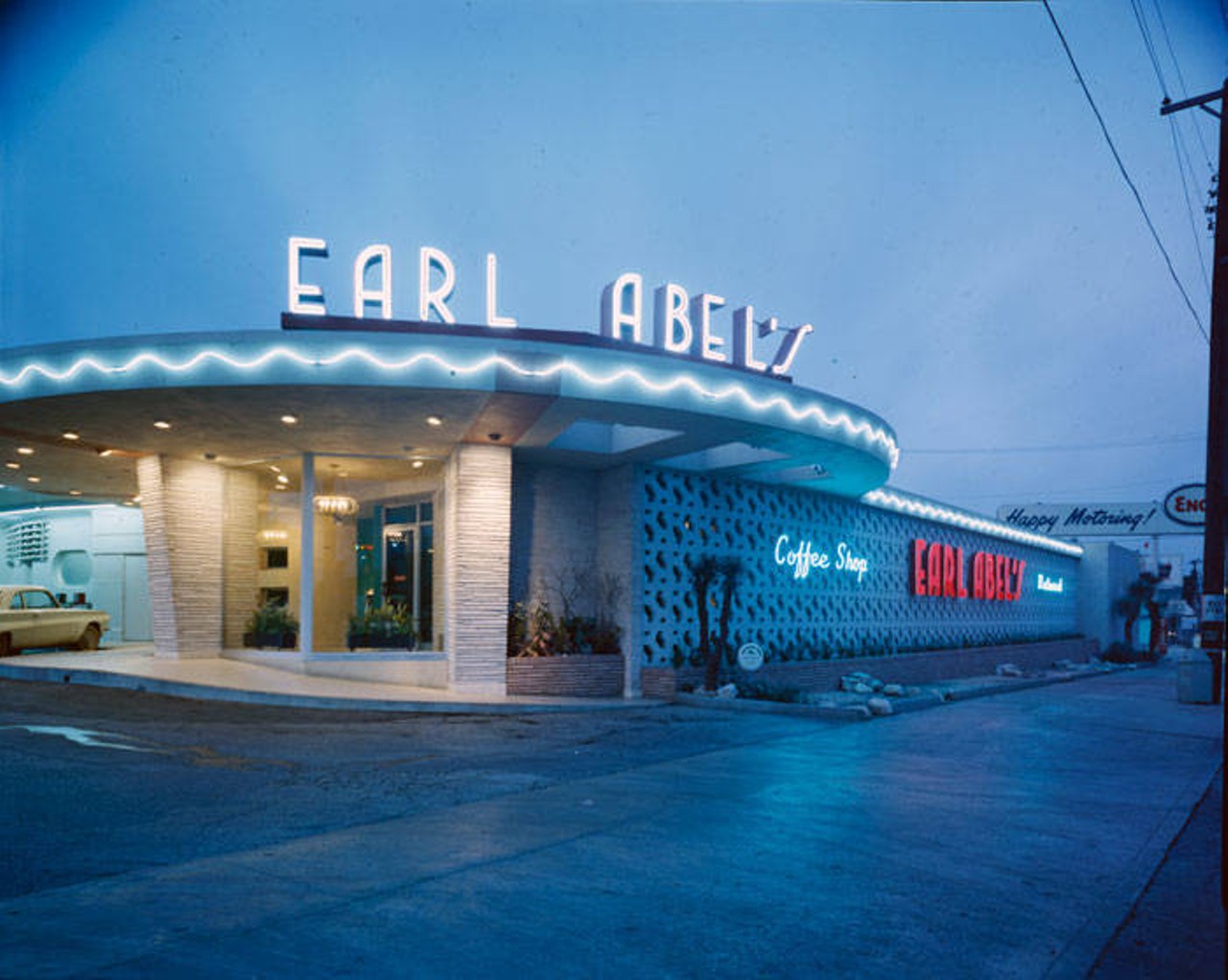
Earl Abel's
Located at Broadway and Hildebrand, this iconic San Antonio restaurant was enjoyed by generations for its fried chicken, pies, breakfasts and other comfort food. It opened in 1933 but was displaced in 2006 by the construction of a luxury condo tower. New owners kept the SA favorite going in two new locations but finally threw in the towel last year due to post-pandemic pressures. Photo via UTSA Libraries Digital Collections
Located at Broadway and Hildebrand, this iconic San Antonio restaurant was enjoyed by generations for its fried chicken, pies, breakfasts and other comfort food. It opened in 1933 but was displaced in 2006 by the construction of a luxury condo tower. New owners kept the SA favorite going in two new locations but finally threw in the towel last year due to post-pandemic pressures. Photo via UTSA Libraries Digital Collections
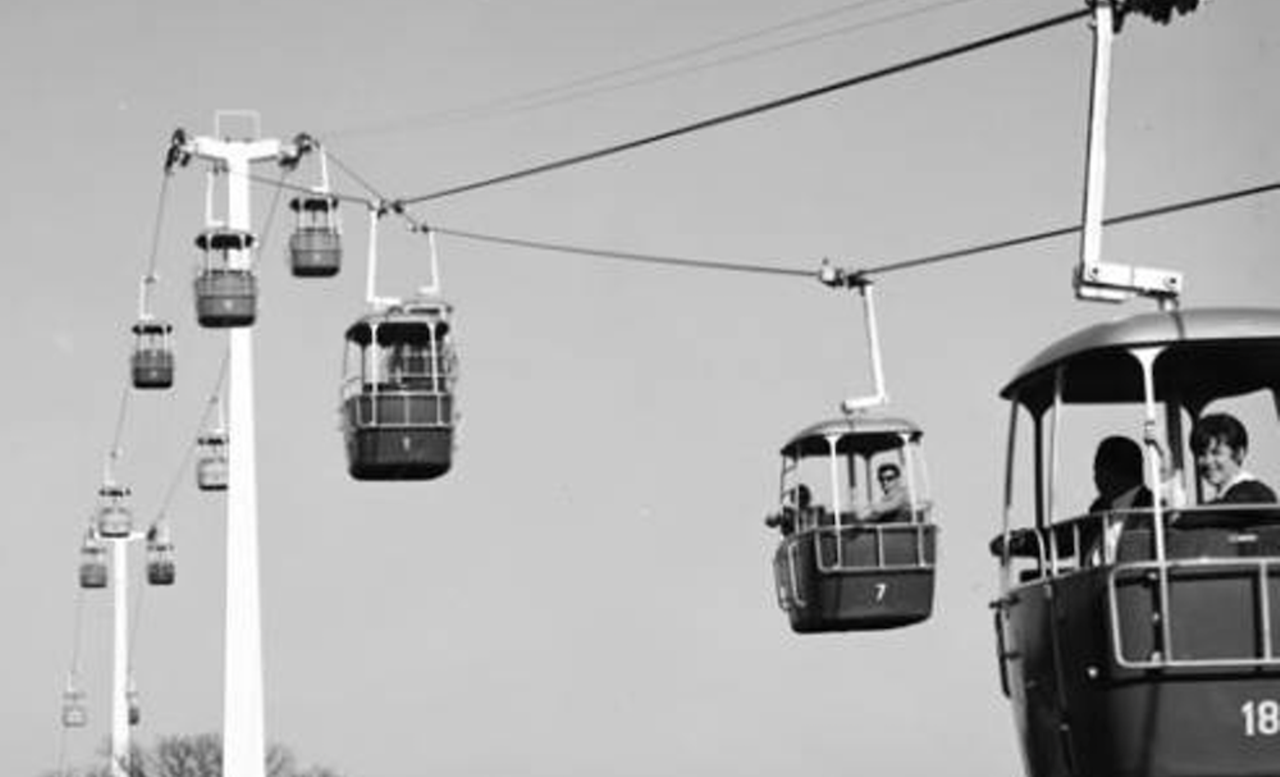
The Sky Ride at Brackenridge Park
The towering Sky Ride at Brackenridge Park opened on November 14, 1964, offering gondolas with amazing views of the park below. The ride closed in 1999 due to maintenance costs.
Photo via UTSA Libraries Digital Collections
The towering Sky Ride at Brackenridge Park opened on November 14, 1964, offering gondolas with amazing views of the park below. The ride closed in 1999 due to maintenance costs.
Photo via UTSA Libraries Digital Collections
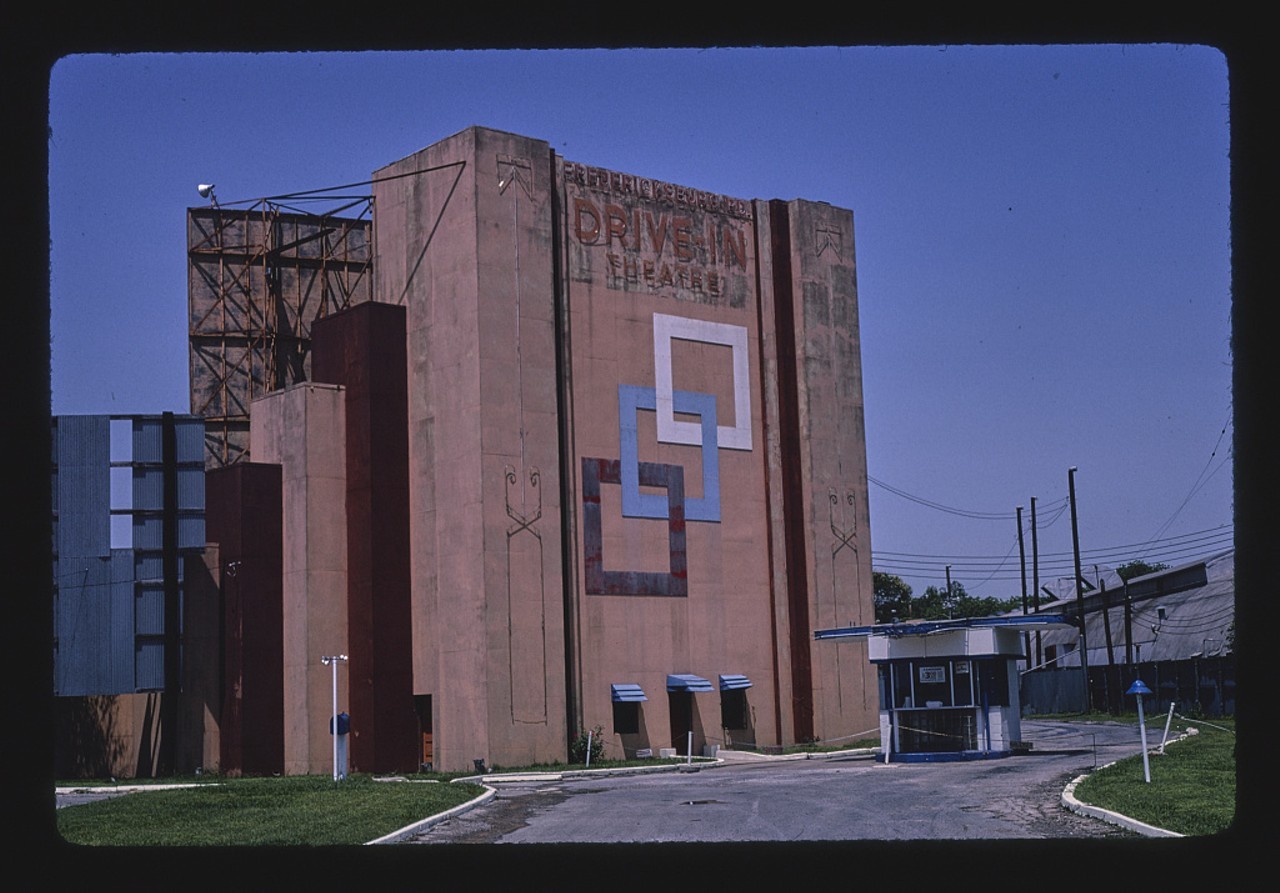
The Fredericksburg Road Drive-In Theatre
The Fredericksburg Road Drive-In, which opened in 1940, was the city's first drive-in cinema, according to historical site Cinema Treasures. The rear of the movie screen faced the road, and at various times the structure displayed murals of an actress, then a clown and finally a midcentury-style geometrical pattern, according to Cinema Treasures. The landmark finally went the way of other drive-ins around 1982.
Photo via John Margolies Roadside America Photograph Archive
The Fredericksburg Road Drive-In, which opened in 1940, was the city's first drive-in cinema, according to historical site Cinema Treasures. The rear of the movie screen faced the road, and at various times the structure displayed murals of an actress, then a clown and finally a midcentury-style geometrical pattern, according to Cinema Treasures. The landmark finally went the way of other drive-ins around 1982.
Photo via John Margolies Roadside America Photograph Archive
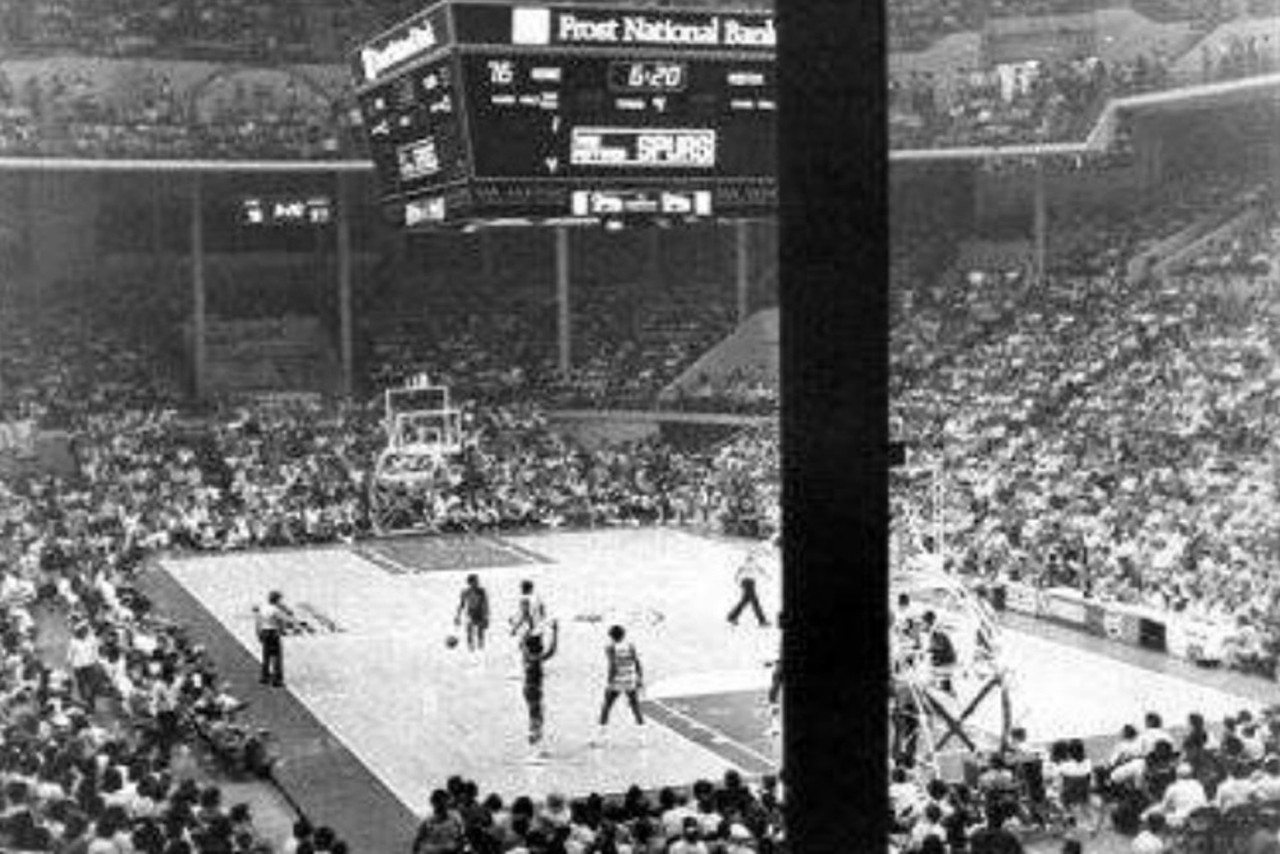
HemisFair Arena
HemisFair Arena made its debut in 1968 with a game between the Harlem Globetrotters and Washington Generals. Over the years, it hosted the San Antonio Spurs along with musical acts including Elvis, Selena, the Jackson 5, Rush and Janis Joplin. The aging arena was torn down in 1995.
Photo via Instagram / panamaniac_x
HemisFair Arena made its debut in 1968 with a game between the Harlem Globetrotters and Washington Generals. Over the years, it hosted the San Antonio Spurs along with musical acts including Elvis, Selena, the Jackson 5, Rush and Janis Joplin. The aging arena was torn down in 1995.
Photo via Instagram / panamaniac_x
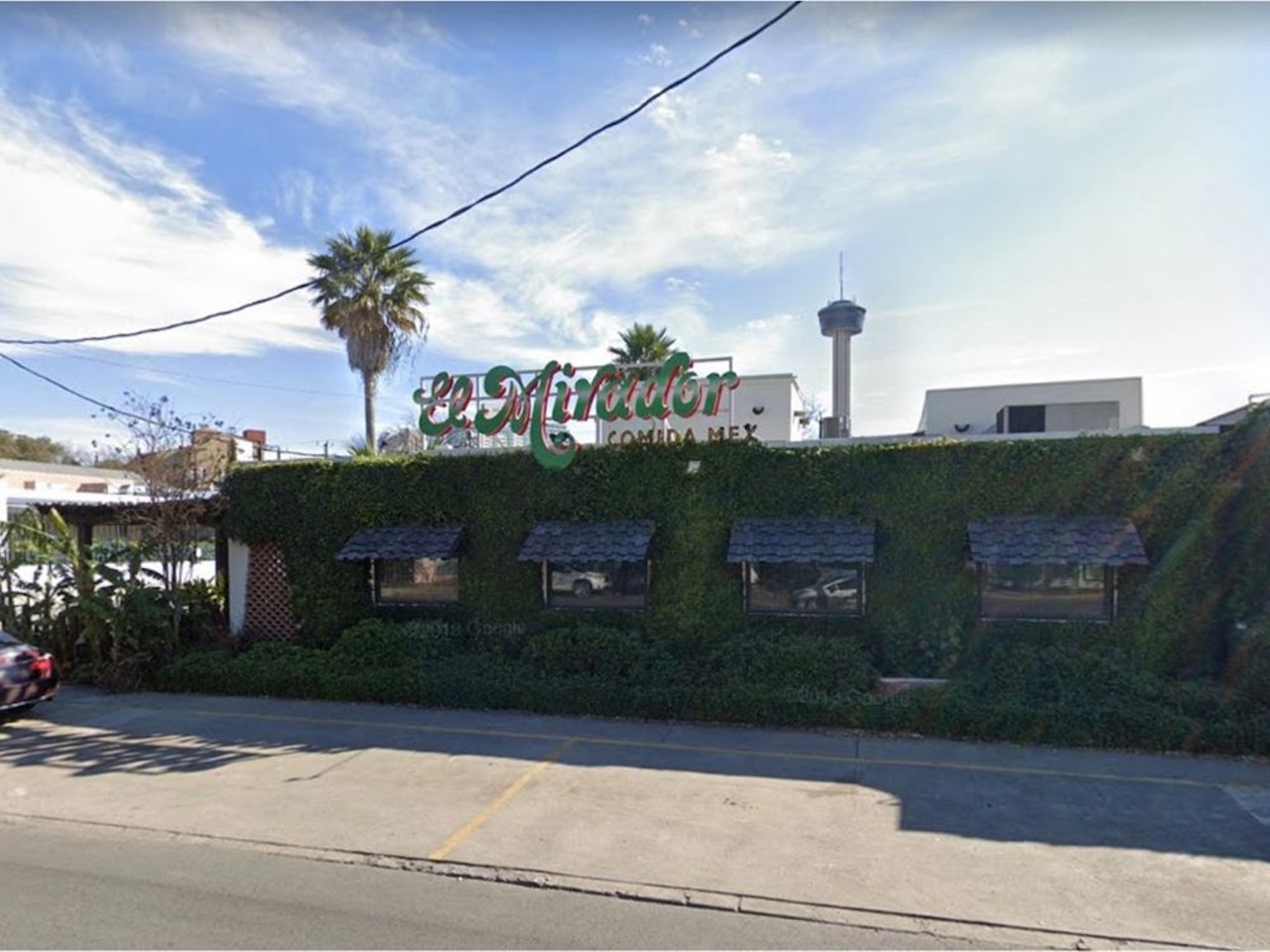
Google Maps
El Mirador
Opened shortly before HemisFair '68, the Treviño family's El Mirador evolved from a modest Mexican eatery into a King William landmark and gathering place for some of the city's highest-power politicos. The family left the restaurant business in 2014, and new ownership kept the enterprise afloat until it sold in 2018 to restaurateur Lisa Wong who knocked most of it down to make way for Rosario’s ComidaMex & Bar.
Opened shortly before HemisFair '68, the Treviño family's El Mirador evolved from a modest Mexican eatery into a King William landmark and gathering place for some of the city's highest-power politicos. The family left the restaurant business in 2014, and new ownership kept the enterprise afloat until it sold in 2018 to restaurateur Lisa Wong who knocked most of it down to make way for Rosario’s ComidaMex & Bar.
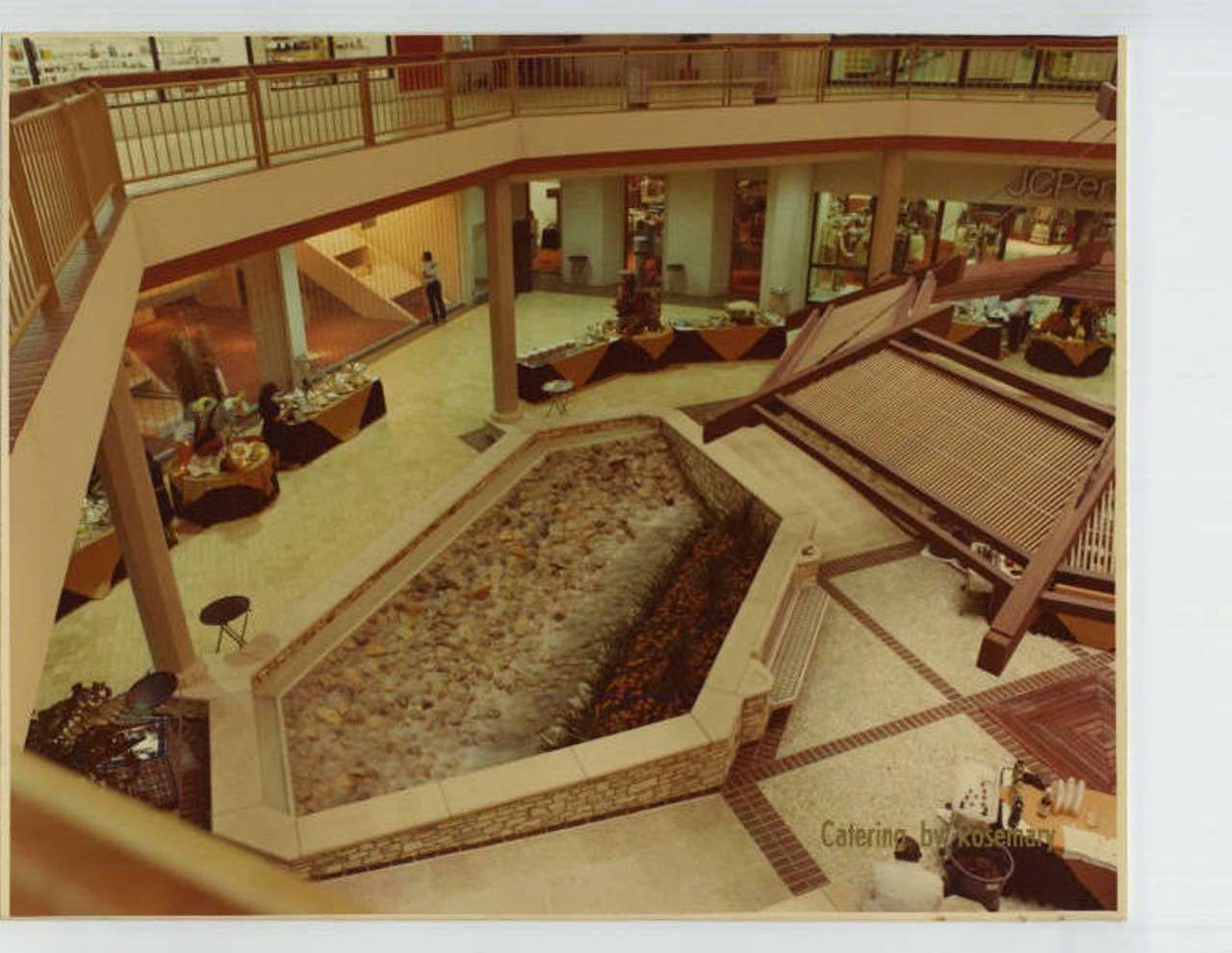
Windsor Park Mall
Northeast San Antonio's Windsor Park Mall made its debut in 1976 with anchor tenants including Montgomery Ward, JCPenney, Joske's and Dillard's. After Ward's closed in the early 2000s, the mall went into decline and ultimately shut its doors. The structure has since been redeveloped into tech firm Rackspace's corporate headquarters.
Photo via UTSA Libraries Digital Collections
Northeast San Antonio's Windsor Park Mall made its debut in 1976 with anchor tenants including Montgomery Ward, JCPenney, Joske's and Dillard's. After Ward's closed in the early 2000s, the mall went into decline and ultimately shut its doors. The structure has since been redeveloped into tech firm Rackspace's corporate headquarters.
Photo via UTSA Libraries Digital Collections
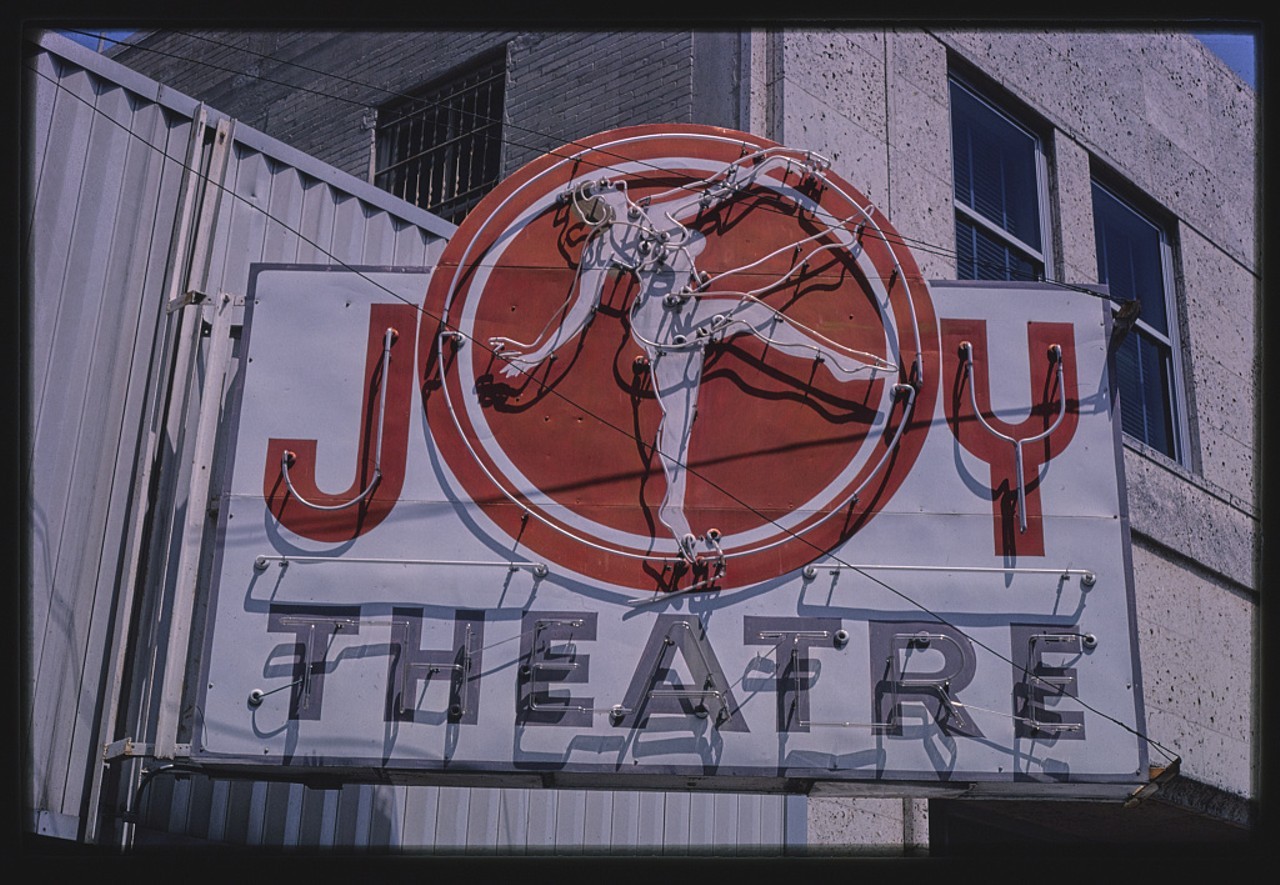
The Joy Theatre
The Joy Theatre opened in 1940 just about a block north of City Hall. Designed by architect J.M. Marriott, the movie house played first-run films but eventually shut down in the late 1950s. It later reopened to present Spanish-language vaudeville shows, then served as an adult theater for the last part of its run. It's since been demolished.
Photo via John Margolies Roadside America Photograph Archive
The Joy Theatre opened in 1940 just about a block north of City Hall. Designed by architect J.M. Marriott, the movie house played first-run films but eventually shut down in the late 1950s. It later reopened to present Spanish-language vaudeville shows, then served as an adult theater for the last part of its run. It's since been demolished.
Photo via John Margolies Roadside America Photograph Archive
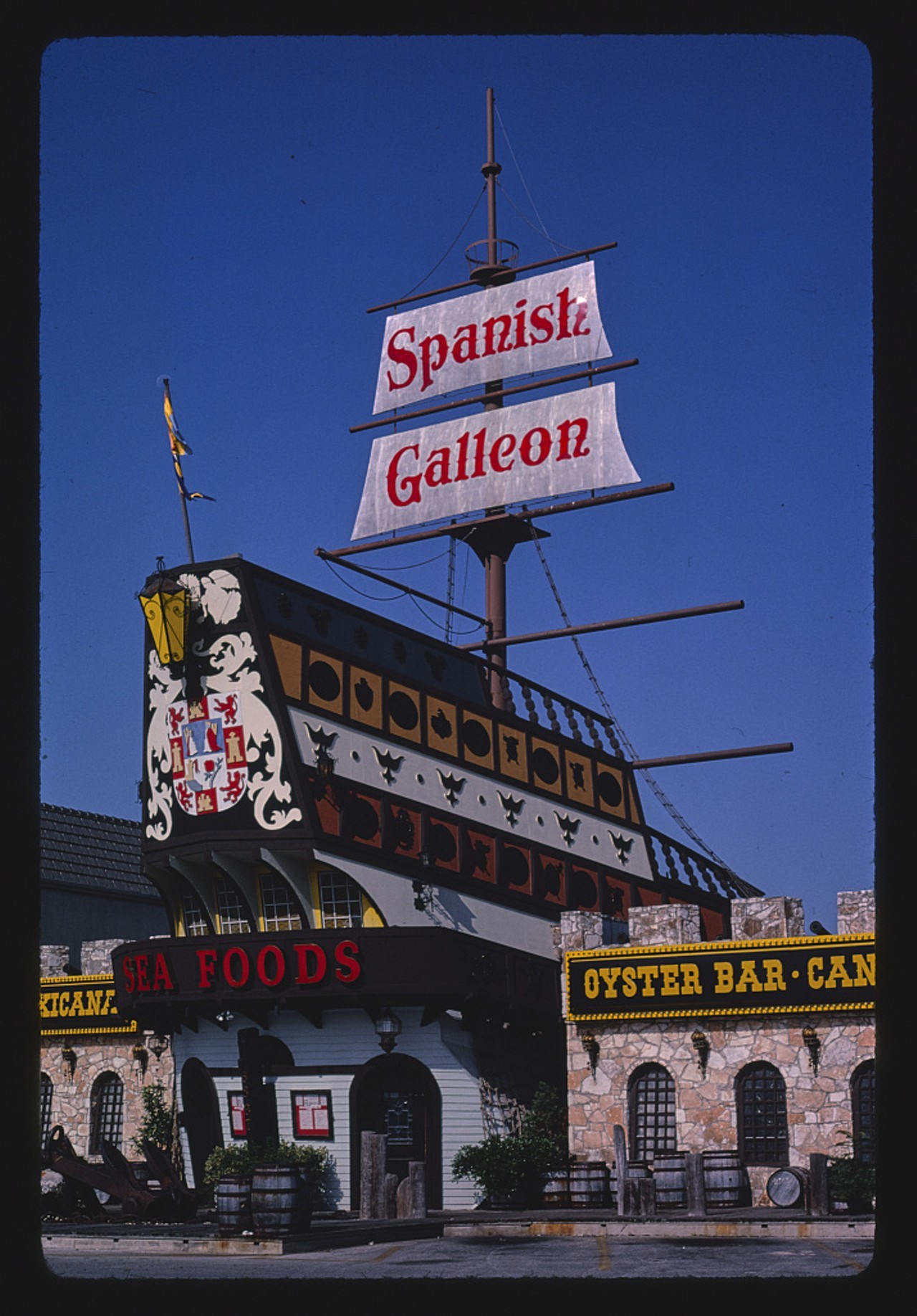
The Spanish Galleon
The Spanish Galleon Restaurant, part of a Texas-based chain, opened in 1976 on San Pedro Avenue, bringing an extensive seafood menu and an eye-catching gimmick to the city. Dallas architects Brooks and Orendain designed the eatery's elaborate exterior, while PMB Construction of Forth Worth designed the interior, the Express-News reports. In 1983, the Spanish Galleon sailed into the sunset when it was taken over and transformed into a Pancho's Mexican Buffet location, according to the daily. John Margolies Roadside America Photograph Archive
The Spanish Galleon Restaurant, part of a Texas-based chain, opened in 1976 on San Pedro Avenue, bringing an extensive seafood menu and an eye-catching gimmick to the city. Dallas architects Brooks and Orendain designed the eatery's elaborate exterior, while PMB Construction of Forth Worth designed the interior, the Express-News reports. In 1983, the Spanish Galleon sailed into the sunset when it was taken over and transformed into a Pancho's Mexican Buffet location, according to the daily. John Margolies Roadside America Photograph Archive
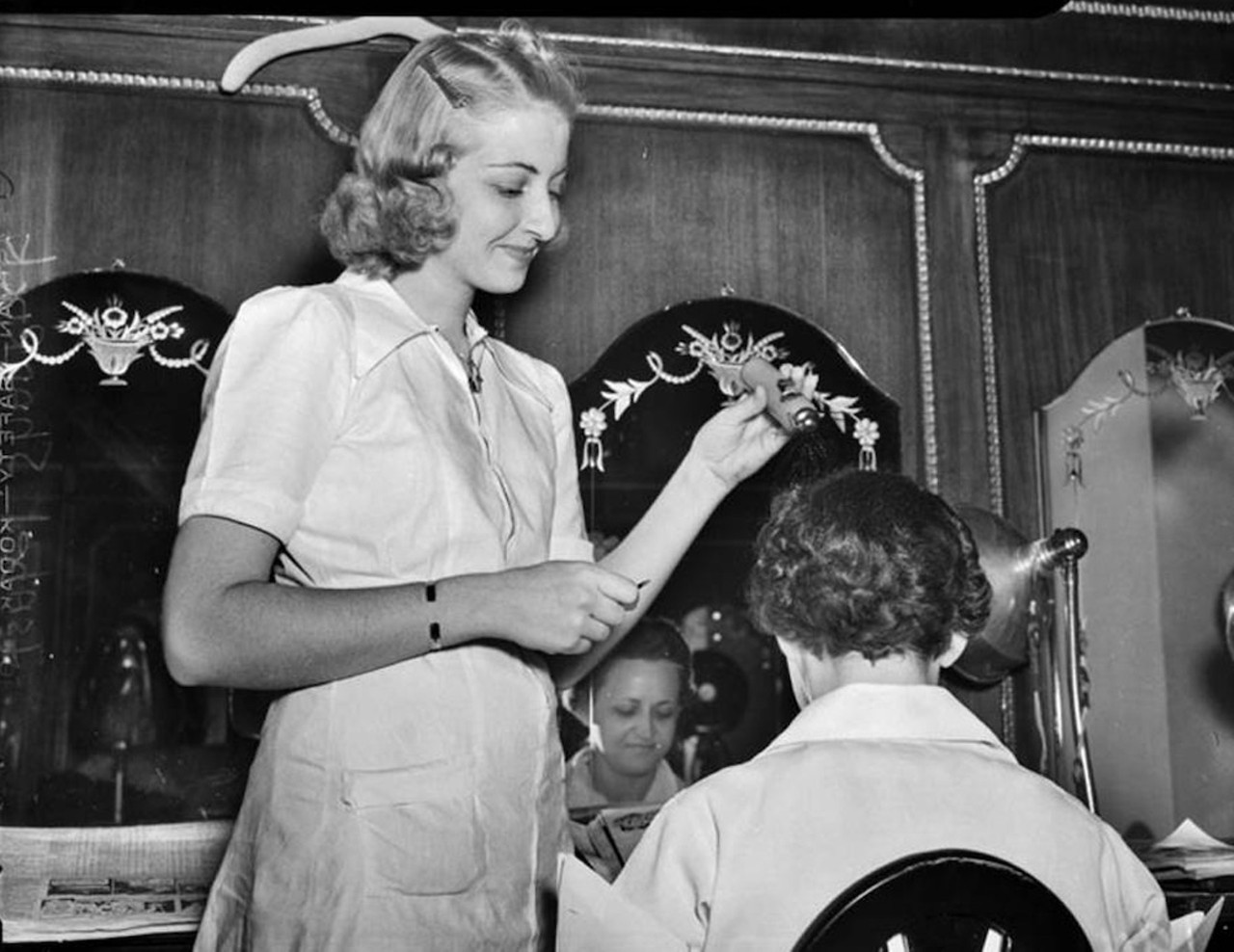
Frost Bros.
For decades, San Antonio fashion mavens flocked to Frost Bros., a high-end retailer than opened downtown in 1917. The homegrown business was a shopping institution for local families and visitors, and it eventually opened in North Star Mall. However, Frost Bros. was forced to close up shop and liquidate during the turbulent retail environment of the late 1980s.
Photo via UTSA Libraries Digital Collections
For decades, San Antonio fashion mavens flocked to Frost Bros., a high-end retailer than opened downtown in 1917. The homegrown business was a shopping institution for local families and visitors, and it eventually opened in North Star Mall. However, Frost Bros. was forced to close up shop and liquidate during the turbulent retail environment of the late 1980s.
Photo via UTSA Libraries Digital Collections
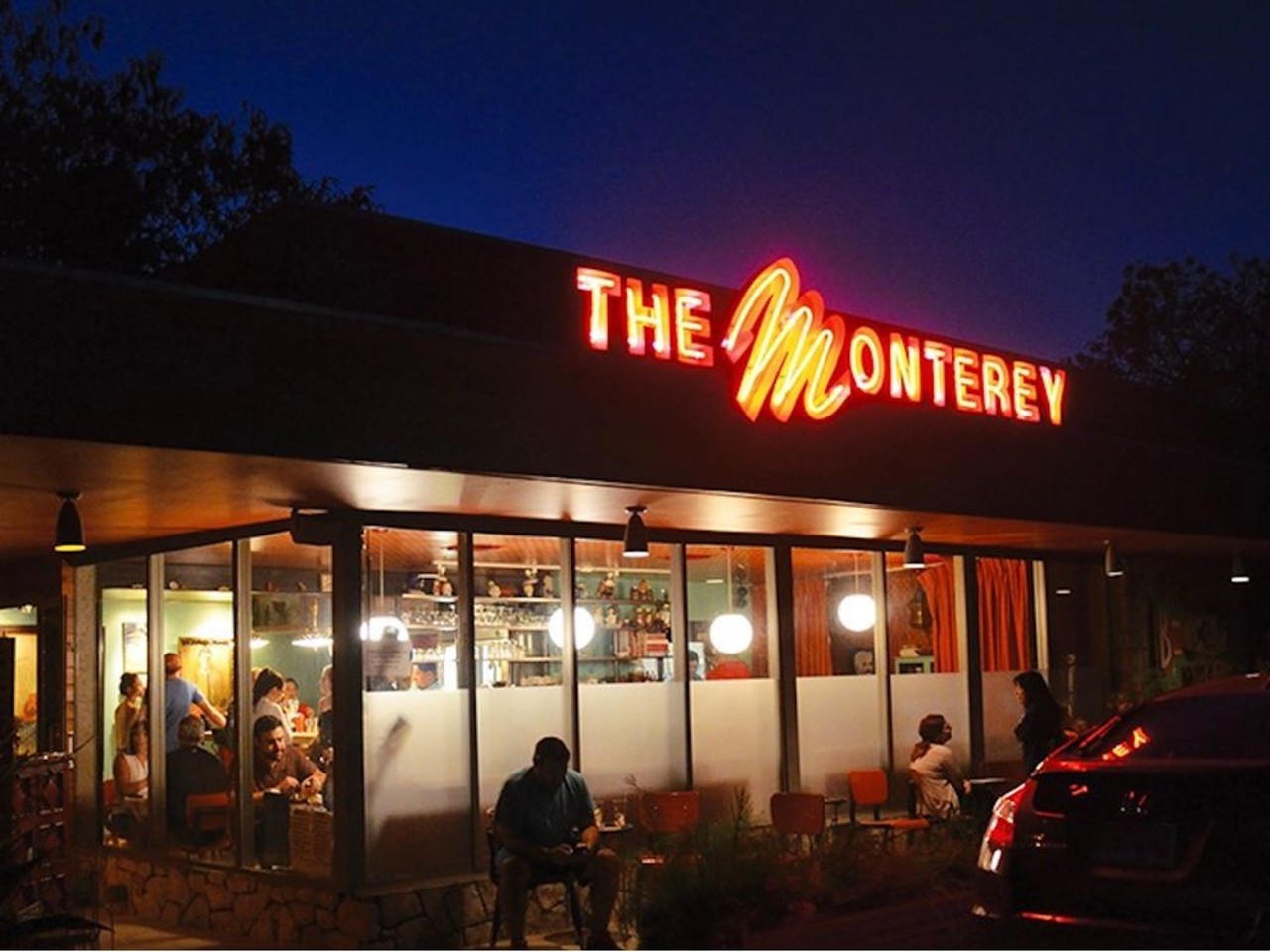
Bryan Rindfuss
The Monterey
Southtown restaurant The Monterey opened around 2010 and closed five short years later, but it left a major mark on the city's culinary scene. Operated by Chad Carey, who now owns Barbaro and Hot Joy, the restaurant specialized in modern American cuisine made with locally sourced ingredients. It's often credited with raising the profile of fortified wines among SA diners.
Southtown restaurant The Monterey opened around 2010 and closed five short years later, but it left a major mark on the city's culinary scene. Operated by Chad Carey, who now owns Barbaro and Hot Joy, the restaurant specialized in modern American cuisine made with locally sourced ingredients. It's often credited with raising the profile of fortified wines among SA diners.
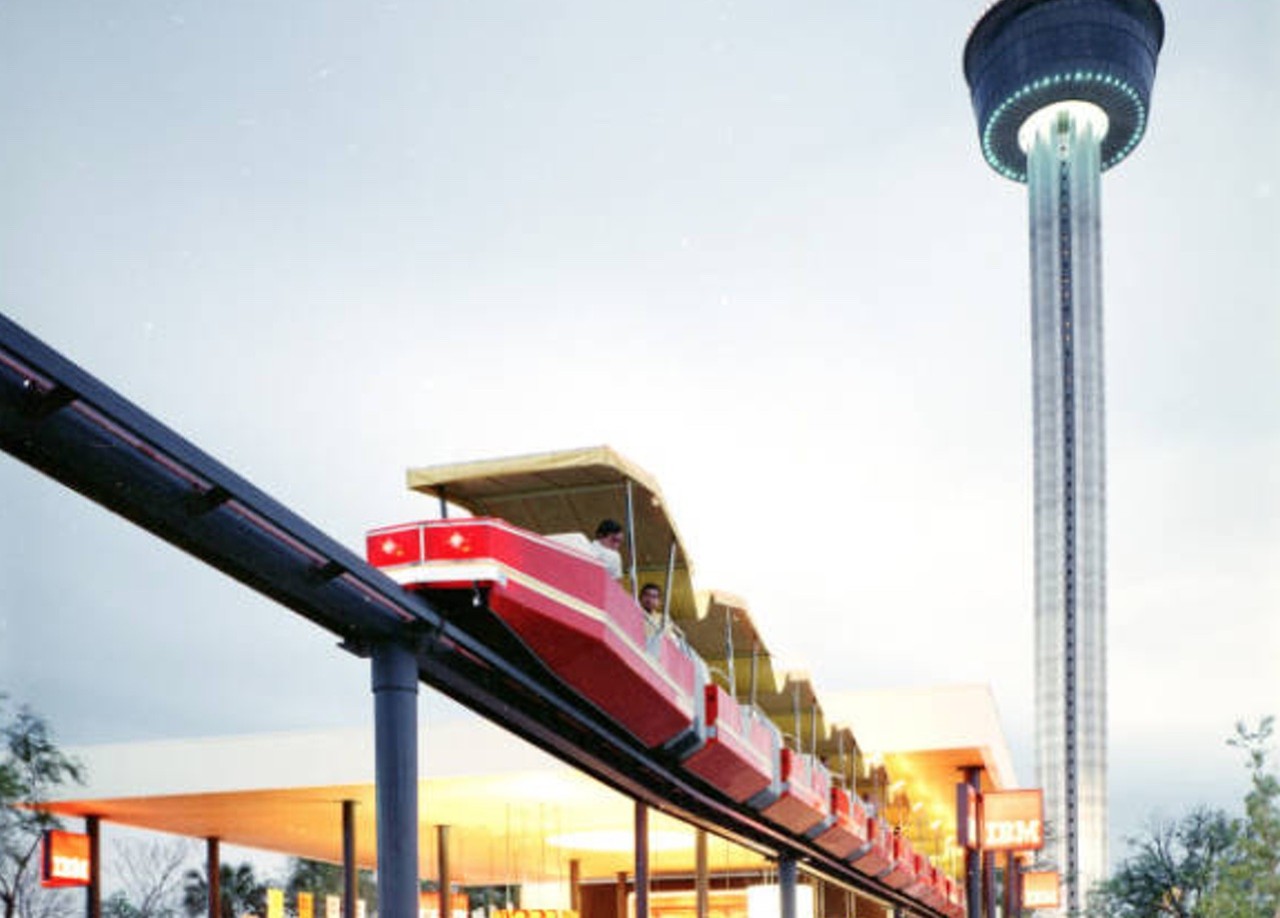
The mini-monorail at Hemisfair
This futuristic form of transportation was developed in 1968 at the Hemisfair complex as part of San Antonio's World's Fair. Passengers could board and be carried along to the event's various pavilions. A collision that same year by two of the trains killed one visitor and injured 40. Following the fair, the monorail went into disuse, and it was scrapped in the 1970s.
Photo via UTSA Libraries Digital Collections
This futuristic form of transportation was developed in 1968 at the Hemisfair complex as part of San Antonio's World's Fair. Passengers could board and be carried along to the event's various pavilions. A collision that same year by two of the trains killed one visitor and injured 40. Following the fair, the monorail went into disuse, and it was scrapped in the 1970s.
Photo via UTSA Libraries Digital Collections
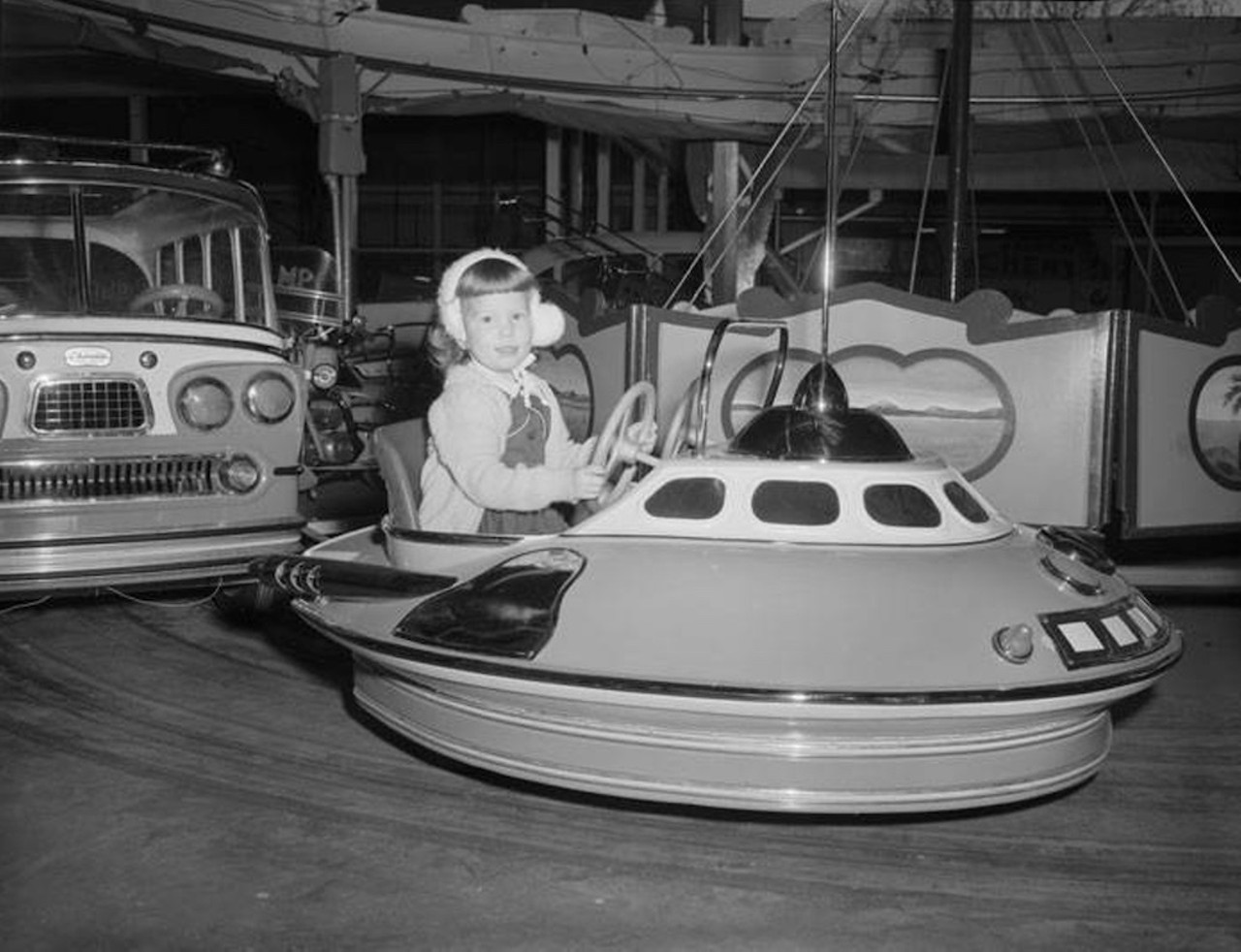
Playland Park
Playland Park opened in 1943 at the intersection of Alamo and Broadway. The ever-expanding attraction became the destination for countless kids' birthday parties. In addition to bumper cars and a Ferris wheel, the park featured a wooden roller coaster known as The Rocket. The park shut down in 1980.
Photo via UTSA Libraries Digital Collections
Playland Park opened in 1943 at the intersection of Alamo and Broadway. The ever-expanding attraction became the destination for countless kids' birthday parties. In addition to bumper cars and a Ferris wheel, the park featured a wooden roller coaster known as The Rocket. The park shut down in 1980.
Photo via UTSA Libraries Digital Collections
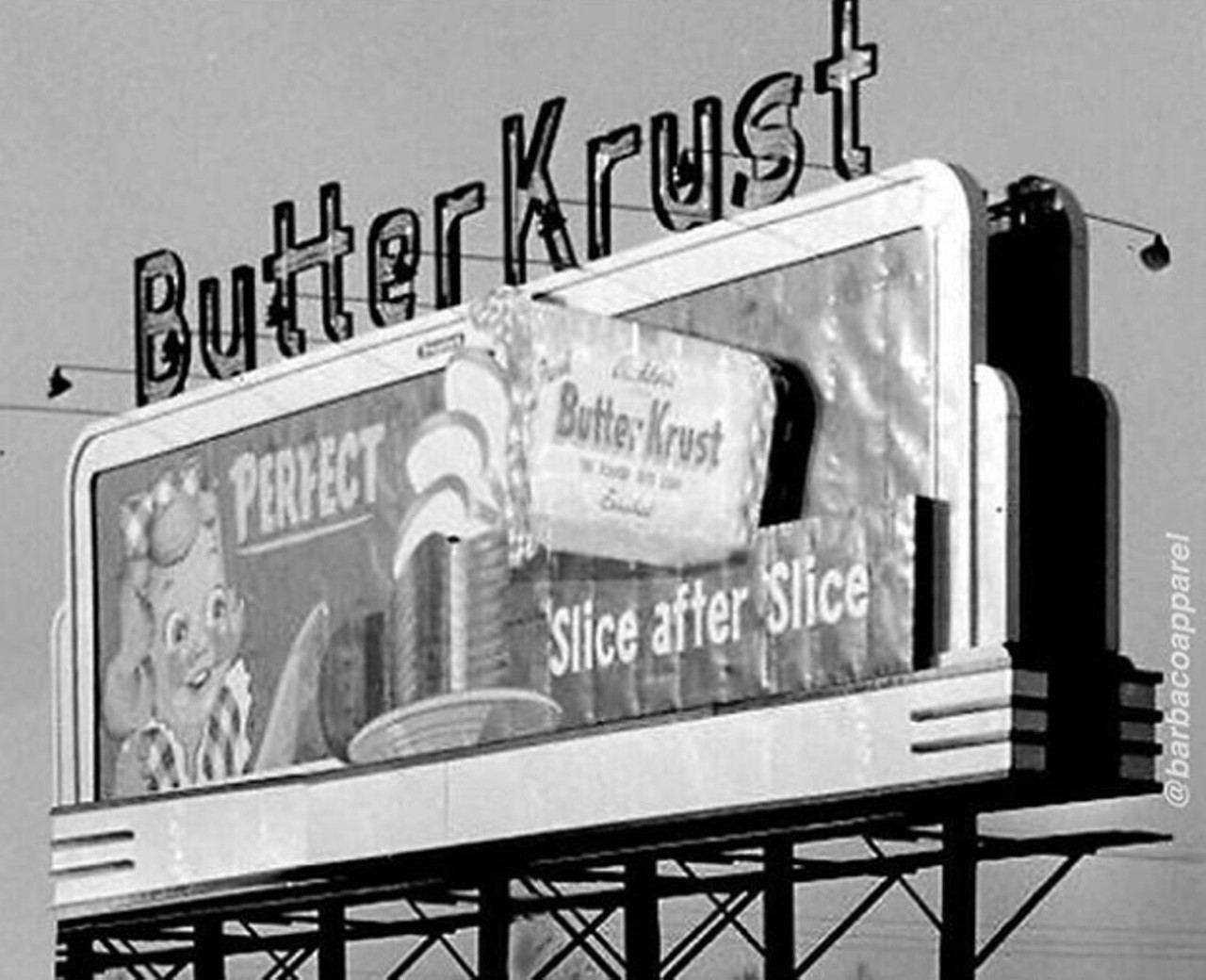
Butter Krust's moving billboard
The “Falling Slices” billboard on San Pedro Avenue just north of Hildebrand featured a rotating wheel that made it appear slices were tumbling from a loaf of Butter Krust bread. The Butter Krust ad came down in 1998, and the mechanical portion of the sign was removed roughly 10 years later.
Photo via Instagram / barbacoapparel
The “Falling Slices” billboard on San Pedro Avenue just north of Hildebrand featured a rotating wheel that made it appear slices were tumbling from a loaf of Butter Krust bread. The Butter Krust ad came down in 1998, and the mechanical portion of the sign was removed roughly 10 years later.
Photo via Instagram / barbacoapparel
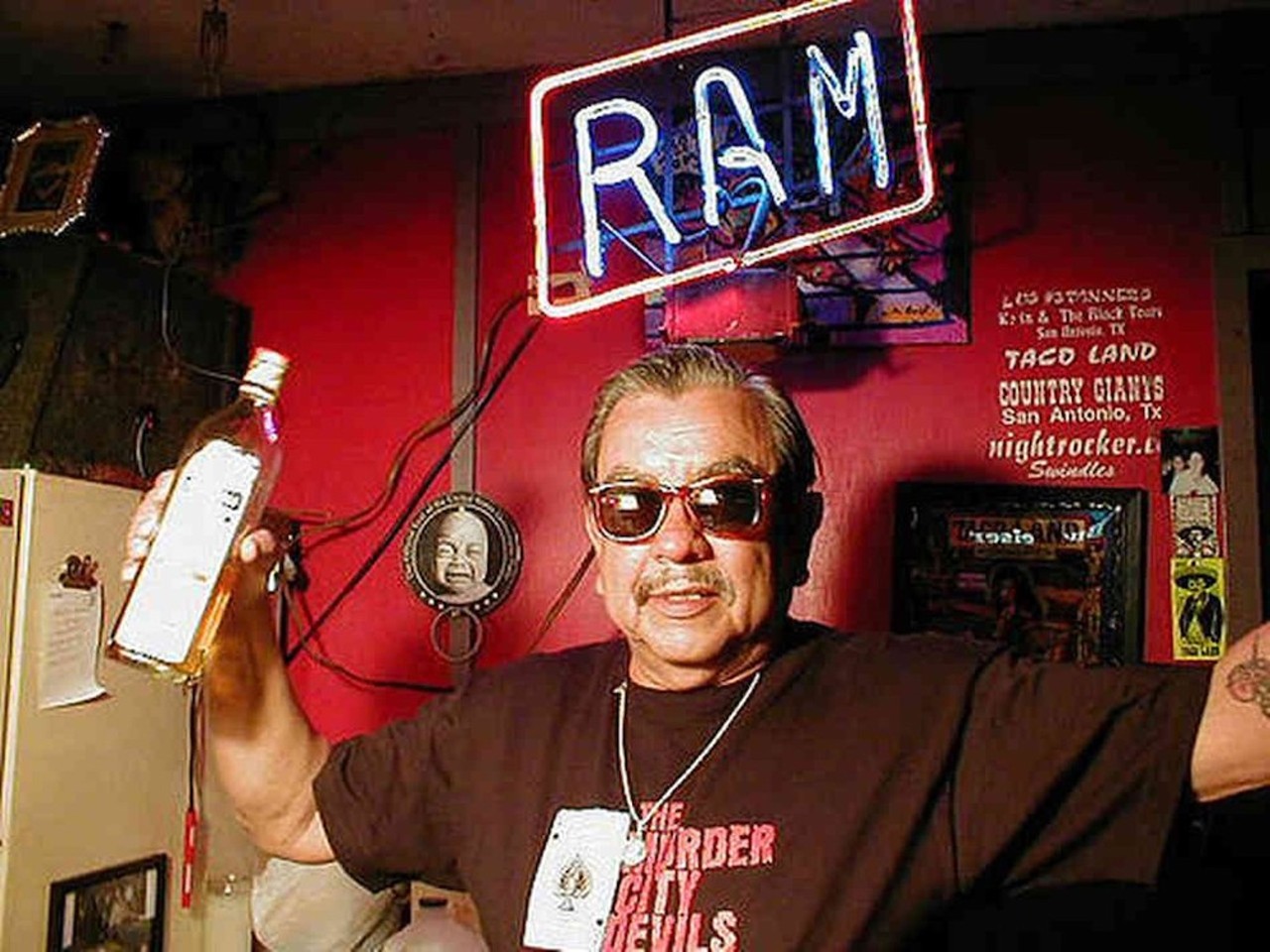
Courtesy Photo / Erik Sanden
Taco Land
A squat, ramshackle venue located across from the Pearl Brewery, Taco Land evolved from a neighborhood bar and taco joint into one of the state's longest-running underground music clubs. Although opened in 1965, music didn't become a fixture until gruff but hilarious owner Ramiro "Ram" Ayala allowed punk rockers to begin staging shows in the early '80s. After Ayala's tragic death in a 2005 robbery, Taco Land closed. The building is now a Velvet Taco location but features a mosaic on its exterior memorializing the colorful bar owner.
A squat, ramshackle venue located across from the Pearl Brewery, Taco Land evolved from a neighborhood bar and taco joint into one of the state's longest-running underground music clubs. Although opened in 1965, music didn't become a fixture until gruff but hilarious owner Ramiro "Ram" Ayala allowed punk rockers to begin staging shows in the early '80s. After Ayala's tragic death in a 2005 robbery, Taco Land closed. The building is now a Velvet Taco location but features a mosaic on its exterior memorializing the colorful bar owner.

San Antonio Children’s Museum
Before evolving into The DoSeum, the Broadway destination that offers hands-on-learning experiences for youngsters, the San Antonio Children's Museum on Houston Street housed two stories of interactive games and attractions. The museum opened in 1995 and closed 20 years later.
Photo via Instagram / sachildrensmuseum
Before evolving into The DoSeum, the Broadway destination that offers hands-on-learning experiences for youngsters, the San Antonio Children's Museum on Houston Street housed two stories of interactive games and attractions. The museum opened in 1995 and closed 20 years later.
Photo via Instagram / sachildrensmuseum
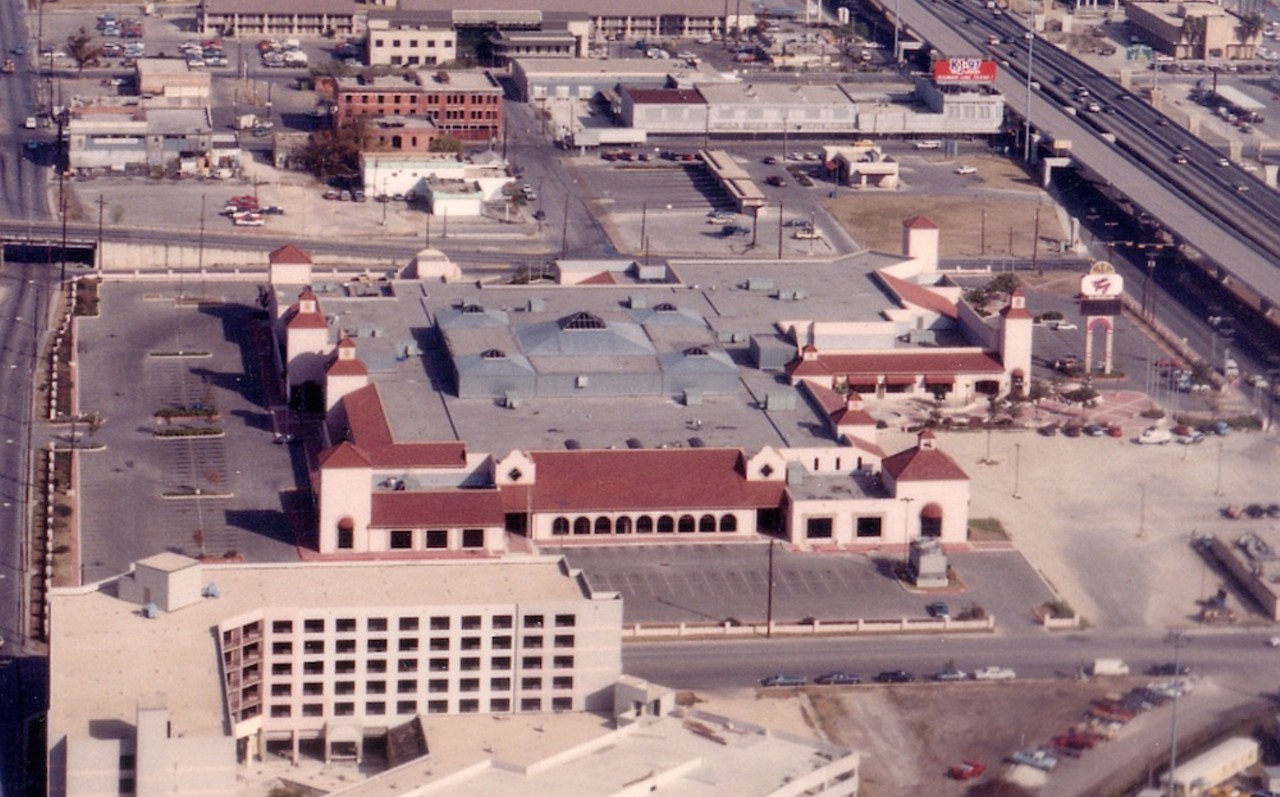
Fiesta Plaza Mall
During the '80s, then-Mayor Henry Cisneros wanted downtown's Fiesta Plaza Mall to promote economic growth on the West Side. He also envisioned it as an attraction that would open tourists' wallets and prolong their stays. An on-site tech incubator even promised to drag San Antonio into a new era. In reality, the development was a quick failure, and detractors dubbed it the "Pink Elephant" based on its ugly-ass paint job. The mall was razed and the land eventually became UTSA's downtown campus.
Photo via city-data.com
During the '80s, then-Mayor Henry Cisneros wanted downtown's Fiesta Plaza Mall to promote economic growth on the West Side. He also envisioned it as an attraction that would open tourists' wallets and prolong their stays. An on-site tech incubator even promised to drag San Antonio into a new era. In reality, the development was a quick failure, and detractors dubbed it the "Pink Elephant" based on its ugly-ass paint job. The mall was razed and the land eventually became UTSA's downtown campus.
Photo via city-data.com
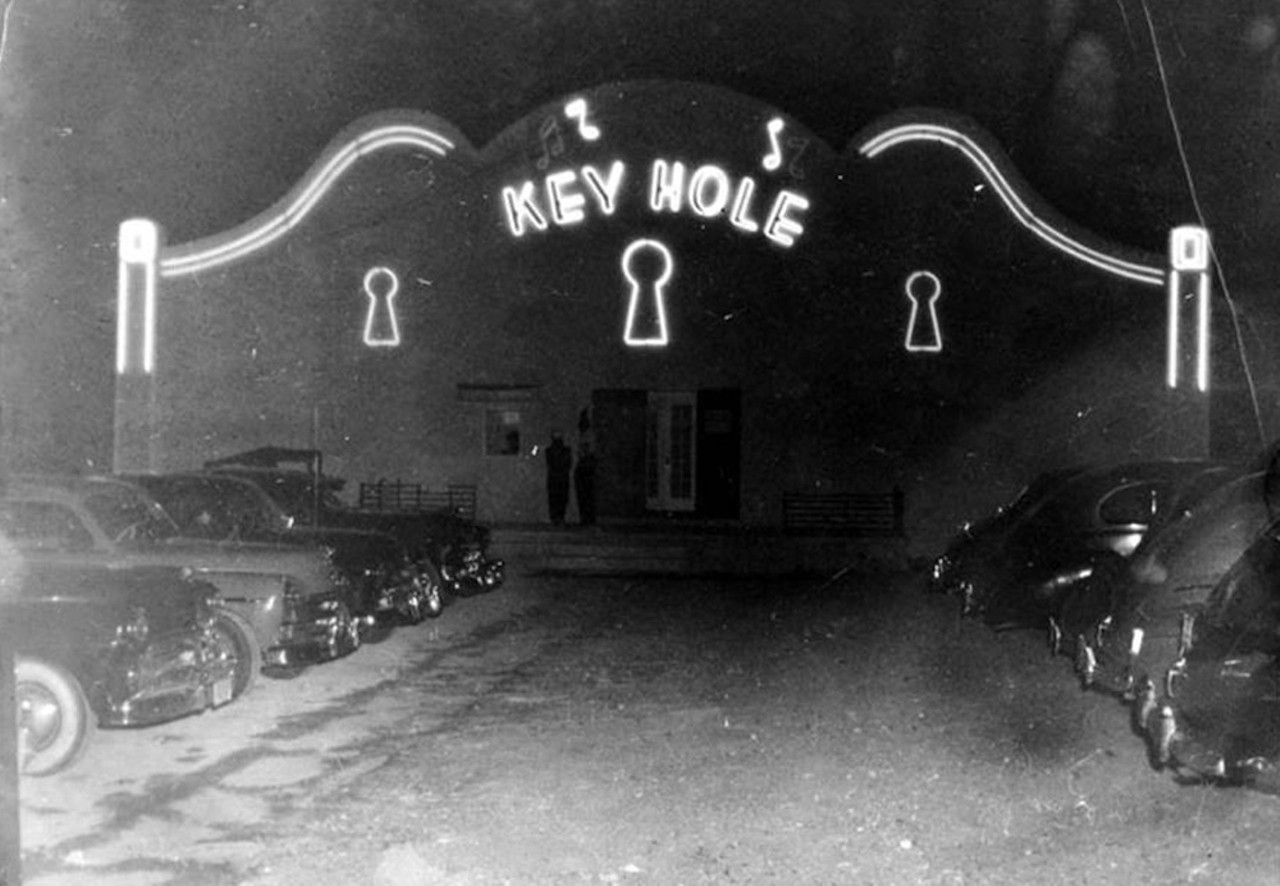
Keyhole Club
Owned by Louisiana native and jazz trumpeter Don Albert, the East Side's Keyhole Club opened in 1944 as one of the city's first integrated nightclubs. Traveling musicians including Dizzy Gillespie and Louis Armstrong were among the performers who took its stage. The original Keyhole Club closed in 1948, and a relocated version followed, but it's also long gone.
Photo via UTSA Libraries Digital Collections
Owned by Louisiana native and jazz trumpeter Don Albert, the East Side's Keyhole Club opened in 1944 as one of the city's first integrated nightclubs. Traveling musicians including Dizzy Gillespie and Louis Armstrong were among the performers who took its stage. The original Keyhole Club closed in 1948, and a relocated version followed, but it's also long gone.
Photo via UTSA Libraries Digital Collections
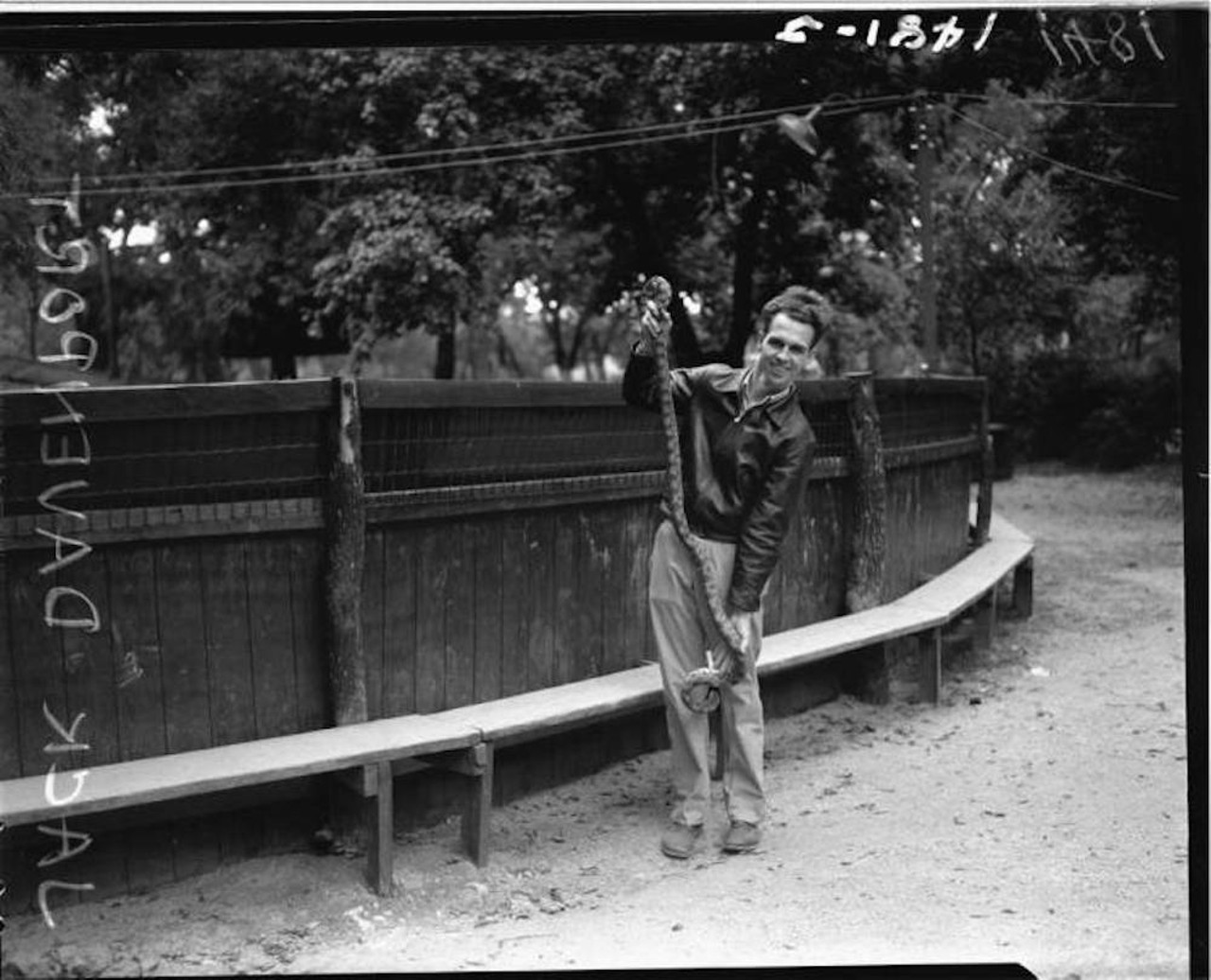
Brackenridge Park Reptile Garden and Alligator Farm
Completed in 1937, this attraction on the edge of the Witte Museum's property charged a dime for spectators to walk through and view alligators, snakes, turtles and other wildlife, according to city archives. Although its popularity is credited with helping keep the Witte open through the Great Depression, it was shuttered in 1975.
Photo via UTSA Libraries Digital Collections
Completed in 1937, this attraction on the edge of the Witte Museum's property charged a dime for spectators to walk through and view alligators, snakes, turtles and other wildlife, according to city archives. Although its popularity is credited with helping keep the Witte open through the Great Depression, it was shuttered in 1975.
Photo via UTSA Libraries Digital Collections
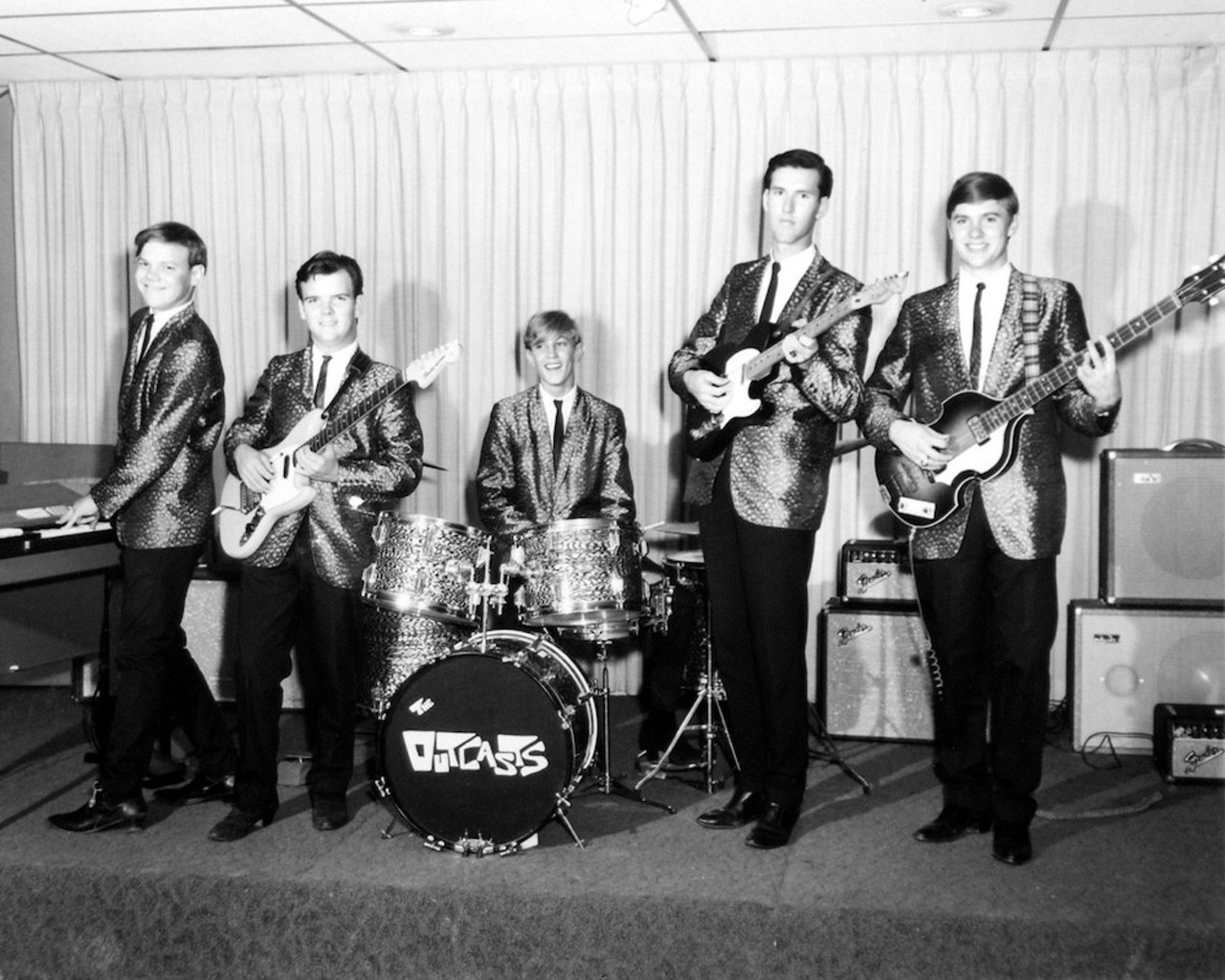
Courtesy Photo / Sam Kinsey Teen Canteen Collection
Teen Canteen
Sam Kinsey opened the first Teen Canteen in 1960 to give San Antonio youngsters a place to enjoy the rock 'n' roll craze. The nightspot became a key venue for the city's burgeoning garage rock scene then for the psychedelic music that flowered later in the decade. It was a regular stop for legendary Texas groups including Bubble Puppy, Shiva's Headband and the Moving Sidewalks. ZZ Top reportedly played its first show there. The Teen Canteen moved several times, ending up at Wonderland Mall in 1963, then a spot on Bitters Road in the late 1960s. The club closed in 1977.
Sam Kinsey opened the first Teen Canteen in 1960 to give San Antonio youngsters a place to enjoy the rock 'n' roll craze. The nightspot became a key venue for the city's burgeoning garage rock scene then for the psychedelic music that flowered later in the decade. It was a regular stop for legendary Texas groups including Bubble Puppy, Shiva's Headband and the Moving Sidewalks. ZZ Top reportedly played its first show there. The Teen Canteen moved several times, ending up at Wonderland Mall in 1963, then a spot on Bitters Road in the late 1960s. The club closed in 1977.







